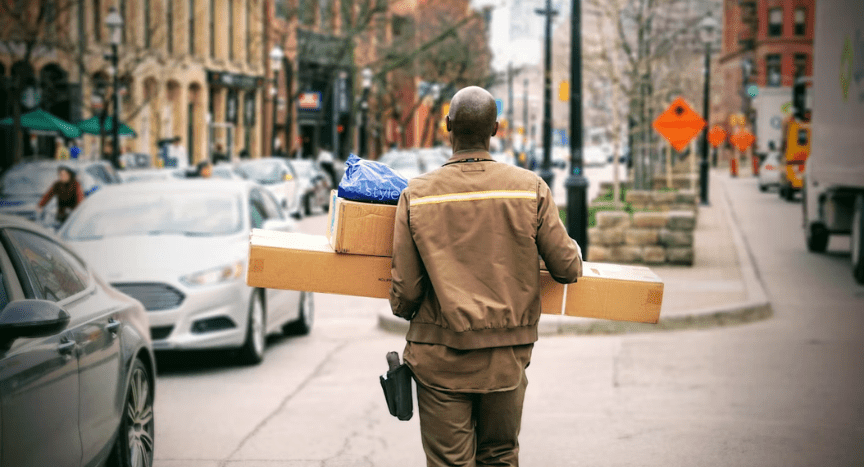Last-mile delivery demands fast-paced movement, constant vehicle entry and exit, and managing packages of varied size and weight. These patterns make last-mile work distinct from other driving roles and lead to higher rates of muscle and joint pain, repetitive injury, and fatigue if not addressed with targeted solutions. Pain points often include low-back, neck, knee, shoulder, and hand discomfort caused by frequent lifting, twisting, and long periods of sitting between stops.
Ergonomic Habits That Cut Injury Risk
- Three-Point Entry/Exit: Always use both hands and one foot, or both feet and one hand, when stepping into and down from the cab. Avoid jumping or twisting since quick moves and awkward landings are the leading causes of strains and falls in last-mile roles.
- Use Carts and Hand Trucks: Make mechanical aids the default for heavier or stacked parcels, especially on high-volume, rapid-delivery routes. This reduces back and shoulder load dramatically over a shift.
- Keep Packages Close to the Body: When lifting, hug parcels close at waist height, bend the knees—not the back—and pivot with the feet rather than twisting at the waist. This principle has a proven effect on reducing lower back claims and muscle fatigue for parcel handlers.
- Adjust Vehicle and Tools: Set seat position for firm lumbar support, use vibration-damping seat covers or gloves, and ensure mirrors and handrails are positioned to avoid excess stretching or gripping when entering and leaving vehicles. These steps are especially important on dense urban or multi-stop routes.
Small Upgrades, Big Benefits
- Slip-Resistant Steps and Quality Footwear: Equip delivery vehicles with anti-slip steps, and wear supportive, grippy shoes, never smooth-soled boots. This addresses a high percentage of slip-and-fall incidents at the curb or customer address.
- Regular Micro-Stretches: Brief, frequent stretching routines during short stops, neck rolls, shoulder shrugs, side bends, help break up repetitive movement cycles and boost flexibility. This preventive practice is recommended across major wellness reviews for last-mile delivery workers.
- Rotate Loads and Posture: Vary the types of routes and package sizes handled if possible, and avoid carrying heavy or uneven loads on one side for extended periods. Using two-strap backpacks for small parcel runs spreads the weight more safely.
Value for the Last Mile Workforce
These recommendations not only lower daily discomfort but also reduce chronic injury, lost time, and claims associated with high-frequency last-mile delivery. By controlling known risk points and using evidence-based ergonomic practices, drivers can complete dense delivery schedules with a lower risk of strain and longer career continuity.
By making these solutions part of daily delivery habits, last-mile pros can finish each shift healthier and stay ready for the routes and challenges ahead.








